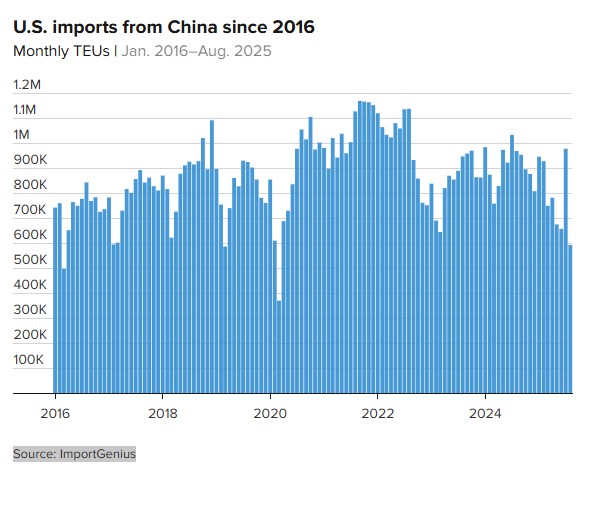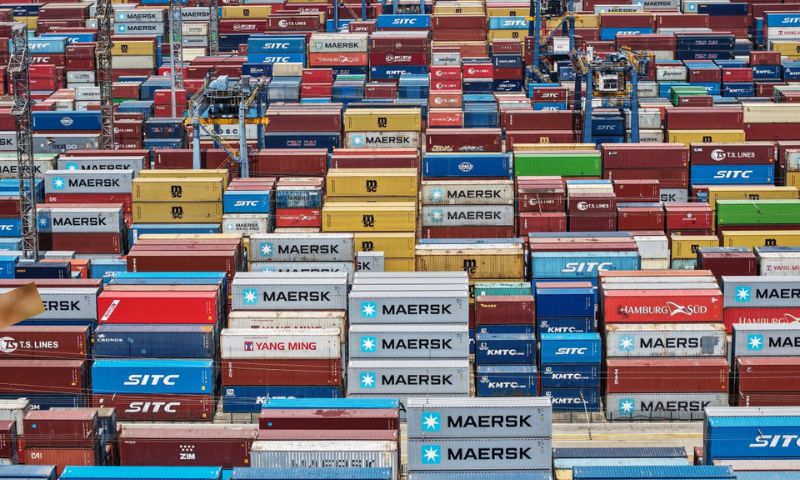Key points
- 2025 frontloading doubled 2018 levels
- Exports dropped 40pc from July to August
- Spot freight rates steadily declining
- Analysts warn of import slowdown ahead
ISLAMABAD: The Trump administration’s latest move in escalating the trade war with China has drawn comparisons to its initial phase in 2018.
However, a key difference lies in how aggressively US companies have tried to avoid tariffs this time around, by fast-tracking shipments from China.
According to ImportGenius data, US importers in 2025 brought in more than twice the share of Chinese exports compared to the 2018 frontloading peak.
This year, there have been three major frontloading surges due to shifting tariffs. The first began in January ahead of “Liberation Day,” with a spike in imports, a slight drop in February and March, followed by a smaller frontloading wave from March to April.
The largest surge came between June and July, when exports rose by 49 per cent as tariff rates were reduced to 34 per cent.
Recent data
In 2018, freight frontloading peaked between September and October with a 12.2 per cent rise, and again between October and November with an additional 22 per cent increase.

However, recent data suggests exports from China are now declining. Indicators like ocean freight bookings and spot container rates show weakening demand.
“The difference in exports from China to the US between July and August of this year is a 40 per cent drop,” said Lynn Hughes, an analyst at ImportGenius. “Yes, the month isn’t over yet, but realistically, we still only have a week. Considering the amount of demand already pulled forward at the beginning of the year and the steady decline, I feel we could be about to start seeing imports drop below 600k TEU for several months.”
Declining freight orders
Goods ordered in July and August are now arriving at US ports, but declining freight orders suggest slower months ahead.
Drewry, a maritime data firm, reported falling spot rates on transpacific routes. Shanghai–Los Angeles rates fell 3 per cent to $2,412 per FEU, while Shanghai–New York dropped 5 per cent to $3,463.
Drewry stated, “The phase of accelerated purchasing by US retailers, which induced an early peak season, has ended… they are now scaling back on procurement.”
Hughes added that such declines mirror past frontloading patterns, noting, “This is the most imbalanced frontloading spike we’ve ever seen.”
























